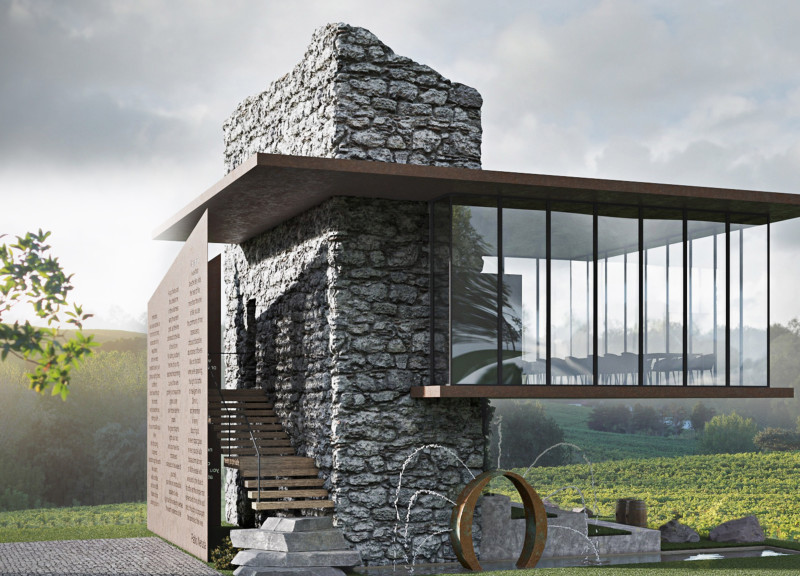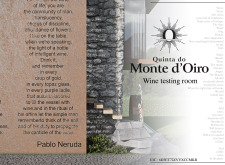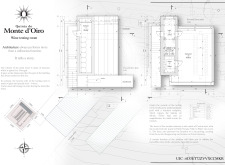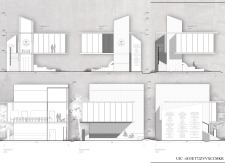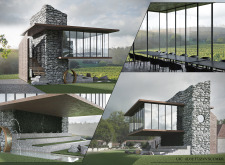5 key facts about this project
The Quinta do Monte d'Oiro Wine Testing Room is set in the scenic landscape of Portugal's vineyards. Designed to serve as a tasting and event space, it emphasizes the local culture and tradition of winemaking. The overall design combines traditional architectural elements with a modern, minimalist approach, creating an inviting space that encourages interaction with the wine and the surrounding scenery.
Architectural Form and Materiality
The main structure features a tower made of stone masonry, which echoes the historical styles found throughout the region. This choice of material adds a sense of reliability and connects the building to its cultural roots. The tower acts as a recognizable point within the vineyards, giving it a strong presence.
In contrast, the tasting room has a cubic shape and utilizes glass for its walls. This design allows natural light to fill the interior while offering impressive views of the landscape. Corten steel is also employed in various aspects of the design, known for its unique aging process that changes its appearance over time. This mirrors the characteristics of wine, which develops its complexity as it matures.
Experiential Features
One noteworthy aspect is the landscape pool beneath the tasting room console, which includes a fountain sculpture inspired by the Quinta do Monte d'Oiro logo. This element enhances the sensory experience for visitors, contributing to the calm atmosphere. The design also includes an amphitheater, providing a space for small events and gatherings related to wine appreciation and community engagement.
Artistic Elements
A distinct fence made of Corten steel features lines from Pablo Neruda's poem "Ode to Wine." This serves both a functional and decorative purpose. The fence acts as a sun grating, creating interesting shadows on the surrounding masonry as the sun moves. This interplay of light and shadow adds depth to the experience, allowing visitors to reflect on their surroundings.
Careful placement within the building offers expansive views of the vineyard, inviting guests to engage with the landscape, especially during sunset. The arrangement encourages quiet moments of contemplation, as it merges the structure with nature. This thoughtful design fosters a connection to both the cultural significance of winemaking and the beauty of the land.


